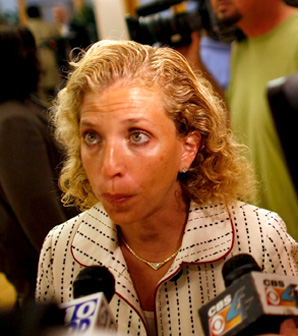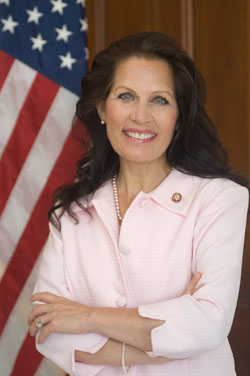For decades, polls have shown that women as a group vote differently than men. Without the women’s vote, Republicans would have swept every presidential race but one between 1968 and 2004.
The gender gap exists on various issues. The major one is the issue of smaller government and lower taxes, which is a much higher priority for men than for women. This is seen in divergent attitudes held by men and women on many separate issues. Women were much more opposed to the 1996 federal welfare reforms, which mandated time limits for receiving welfare and imposed some work requirements on welfare recipients. Women are also more supportive of Medicare, Social Security and educational expenditures.
Studies show that women are generally more risk averse than men. Possibly, this is why they are more supportive of government programs to ensure against certain risks in life. Women’s average incomes are also slightly lower and less likely to vary over time, which gives single women an incentive to prefer more progressive income taxes. Once women become married, however, they bear a greater share of taxes through their husbands’ relatively higher income. In that circumstance, women’s support for high taxes understandably declines.
Marriage also provides an economic explanation for men and women to prefer different policies. Because women generally shoulder most of the child-rearing responsibilities, married men are more likely to acquire marketable skills that help them earn money outside the household. If a man gets divorced, he still retains these skills. But if a woman gets divorced, she is unable to recoup her investment in running the household. Hence, single women who believe they may marry in the future, as well as married women who most fear divorce, look to the government as a form of protection against this risk from a possible divorce: a more progressive tax system and other government transfers of wealth from rich to poor.
The more certain a woman is that she doesn’t risk divorce, the more likely she is to oppose government transfers.
Has it always been this way? Can women’s suffrage in the late 19th and early 20th century thus help explain the growth of government? While the timing of the two events is suggestive, other changes during this time could have played a role. For example, some argue that Americans became more supportive of bigger government due to the success of widespread economic regulations imposed during World War I.
A good way to analyze the direct effect of women’s suffrage on the growth of government is to study how each of the 48 state governments expanded after women obtained the right to vote. Women’s suffrage was first granted in western states with relatively few women — Wyoming (1869), Utah (1870), Colorado (1893) and Idaho (1896). Women could vote in 29 states before women’s suffrage was achieved nationwide in 1920 with the adoption of the 19th Amendment to the Constitution.
If women’s suffrage increased government, our analysis should show a few definite indicators. First, women’s suffrage would have a bigger impact on government spending and taxes in states with a greater percentage of women. And secondly, the size of government in western states should steadily expand as women comprise an increasing share of their population.
Even after accounting for a range of other factors — such as industrialization, urbanization, education and income — the impact of granting of women’s suffrage on per-capita state government expenditures and revenue was startling. Per capita state government spending after accounting for inflation had been flat or falling during the 10 years before women began voting. But state governments started expanding the first year after women voted and continued growing until within 11 years real per capita spending had more than doubled. The increase in government spending and revenue started immediately after women started voting.
Yet, as suggestive as these facts are, we must still consider whether women’s suffrage itself caused the growth in government, or did the government expand due to some political or social change that accompanied women’s suffrage?
Fortunately, there was a unique aspect of women’s suffrage that allows us to answer this question: Of the 19 states that had not passed women’s suffrage before the approval of the 19th Amendment, nine approved the amendment, while the other 12 had suffrage imposed on them. If some unknown factor caused both a desire for larger government and women’s suffrage, then government should have only grown in states that voluntarily adopted suffrage. This, however, is not the case: After approving women’s suffrage, a similar growth in government was seen in both groups of states.
http://johnrlott.tripod.com/op-eds/WashTimesWomensSuff112707.html
And Peggy “the Moocher” Joseph:
“Because I never thought this day would ever happen. I won’t have to worry ‘bout putting gas in my car. I won’t have to worry ‘bout paying my mortgage. You know. If I help him, he’s gonna help me.”
http://www.youtube.com/watch?v=P36x8rTb3jI
Liberal women are, in general, self centered, over weight, plain looking or down right dog ugly and have more trouble getting and/or staying married and therefore are looking to uncle sugar for assistance.
I know there are exceptions, but if you go to a TEA party rally, while many of the women there are getting on in years, you can see much beauty.
Their inner souls are 100% beautiful and the visible external is 100% better than a random group of liberal women.
Think congress critters: debbie watermouth shultz vs Michelle Bachmann.



